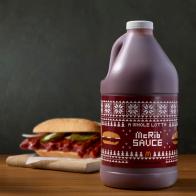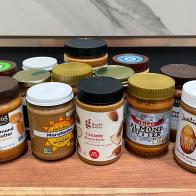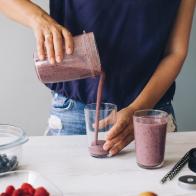Can Ultra-Processed Foods Be Healthy?
A registered dietitian breaks down what ‘processed’ and ‘ultra-processed’ really means.
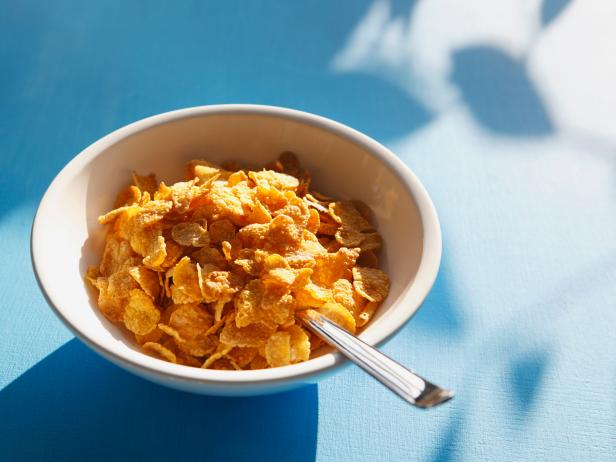
Westend61/Getty Images
You’ve likely heard the terms ‘processed’ and ‘ultra-processed,’ but what do they mean, exactly? Both terms – especially ultra-processed – have a bad reputation. Many health influencers tend to tell people to stay away from ultra-processed foods because they are “unhealthy” — but is it really that simple?
What’s the Difference Between ‘Processed’ and ‘Ultra-Processed’ Foods?
When a food is consumed as is from nature – such as a fresh whole potato or apple – it’s defined as a ‘whole food.’
Contrary to what you may think, many foods that are consumed regularly actually require some sort of processing. For instance, even something fairly simple like applesauce is technically processed. Since you’ve changed an apple from its original form by pureeing or blending it, it’s defined as a processed food.
Oftentimes, processing is needed in order to consume, or preserve for later, a food at all. Cooking (hard-boiled eggs), freezing (frozen berries), dehydrating (dried fruit), milling (all-purpose flour) and culturing with bacteria (yogurt) all qualify as processes. Any foods that go through them are considered processed foods.
As for ‘ultra-processed’ foods, there are various ways to define the term, but one of the most common systems used to identify a food’s level of processing is the NOVA system. A 2019 article published in Public Health Nutrition outlines the NOVA system and how ultra-processed foods are created. The NOVA classification system groups foods according to the extent and purpose of industrial processing and puts them in four categories:
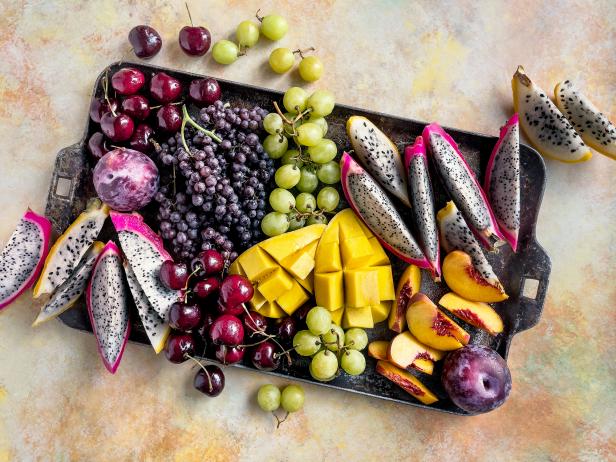
Claudia Totir/Getty Images
Group 1 - Minimally Processed Foods and Unprocessed Foods: Naturally occurring foods with no addition of salt, sugar, oils or fats. Examples include milk, meat, eggs, fish, poultry, plain unsweetened yogurt, beans, fresh, frozen or dried fruits and vegetables, oats, grits, pasta, rice.
Group 2 - Processed Culinary Ingredients: Food products from Group 1 that have been processed by pressing, refining, grinding and/or milling; they are used in home and restaurant kitchens to prepare, season and cook Group 1 foods. Examples include vegetable oils, butter, vinegar; salt, sugar and molasses from cane or beet; honey extracted from combs and syrup from maple trees.
Group 3 - Processed Foods: Food products made by adding sugar, oil and/or salt to create simple products from Group 1 foods with increased shelf life or enhanced taste. Examples include canned vegetables, fruits, and beans; some salted or sugared nuts and seeds; salted, cured or smoked meats; canned fish; fruits in syrup; cheese and freshly made bread.
Group 4 - Ultra-Processed Foods: Industrially created food products created with the addition of multiple ingredients that may include some Group 2 ingredients as well as additives to enhance the taste and/or convenience of the product, such as hydrolyzed proteins, soy protein isolate, maltodextrin, high-fructose corn syrup, stabilizers, flavor enhancers, non-sugar sweeteners and processing aids such as stabilizers and bulking and anti-bulking agents. Examples include commercially produced breads, rolls, cakes, cookies, doughnuts, breakfast cereals, soy burgers, hummus, tofu, baby formula, protein powder, flavored yogurts, ready-to-heat meals (like frozen pizza), soft drinks and candy.

years/Getty Images
Can Ultra-Processed Food Be Healthy?
The NOVA system defines how much a food is processed, but not how nutritious a food is. Yes, soft drinks and candy (Group 4 ultra-processed foods) do not provide good-for-you nutrients. However, there are other Group 4 ultra-processed foods that do provide healthful nutrients and are often combined with other healthful foods. For example, protein powder, which is a Group 4 food, is often consumed with fruit, vegetables and yogurt or milk. Breakfast cereal is also typically consumed with fruit and milk, and many cereals are fortified with under-consumed nutrients in the typical American diet (like vitamin D).
Researchers have also looked to see if eating ultra-processed foods in your diet could sabotage your diet quality. The 2023 study published in The Journal of Nutrition created a seven-day, 2,000 calorie diet based on the recommendations from the Dietary Guidelines by using ultra-processed foods for at least 80-percent of the calories. The results found that this planned diet had a Healthy Eating Index (HEI) score of 86 out of 100. The HEI measures diet quality and per the Dietary Guidelines, Americans currently have a 59 HEI score, on average. This means that many Americans are consuming a diet below the recommendations and getting too little of some important nutrients (like calcium, potassium, fiber and vitamin D), and too much of other nutrients (like sodium, added sugar and saturated fat).
The reality is how you pair your foods matters – and it’s not all about how processed your food is.
Bottom Line: Stop shunning ultra-processed foods. Rather, pay more attention to the nutrients in your food and the variety of foods you choose within your healthy eating plan.
*This article was written and/or reviewed by an independent registered dietitian nutritionist.
Related Content:












